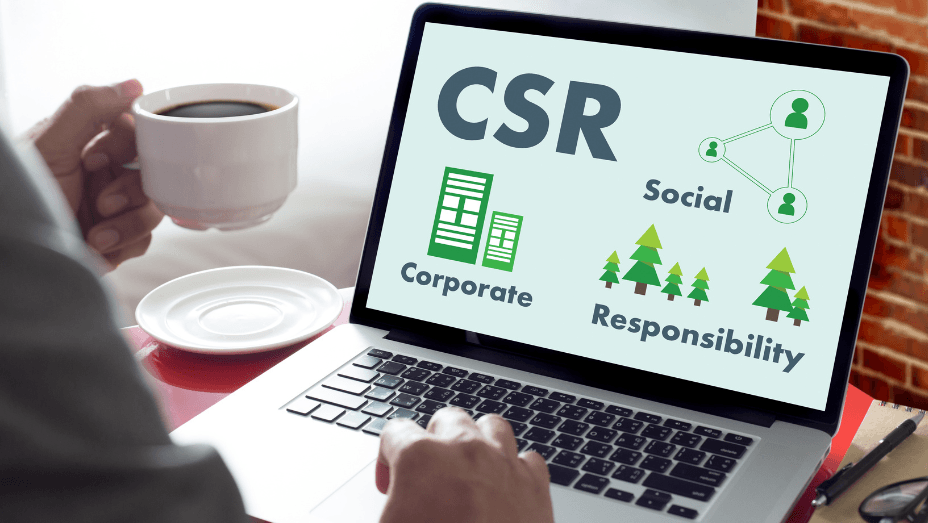Business sustainability is all the talk of the town these days. And for good reason. The world is becoming more and more aware of the importance of sustainability, both in terms of the environment and in terms of social responsibility.
Now, more than ever, you have all the good reasons to invest in business sustainability. And you wouldn't be alone in your efforts: more than half of the businesses surveyed by Deloitte in 2022 have already started working on their sustainability plans by working with energy-efficient materials, adopting energy-friendly equipment, or providing employees with business sustainability training.
What does it take to build a successful business sustainability plan -- and how to do it, more specifically?
Read on to find out more.
Business Sustainability Plan: The First Step to Building a Sustainable Organization
Business sustainability cannot be achieved without a proper plan -- so before you dive into any other elements of your business sustainability strategy, think things through and plan them out.
A business sustainability plan can be defined as "a management tool that guides an organization in its efforts to operate in an economically, environmentally and socially sustainable manner."
Sounds like a lot, right? But don't worry, you don't have to do everything at once. You can start small and gradually increase your sustainability efforts as you go. The key is to start somewhere -- and an actual plan is just where you want to start.
A sustainability plan is not an option, but a necessity. Without it, you will:
- Struggle to communicate your sustainability efforts to employees, shareholders, and other key stakeholders
- Fail to track and measure your progress
- Have a hard time making the case for sustainable practices to senior management
- Risk making decisions that are not aligned with your sustainability goals.
In short: a business sustainability plan is the first step to building a sustainable organization -- and one you cannot afford to skip.
Benefits of Business Sustainability
Business sustainability isn't just another buzzword. It's a must, and from more than one point of view. There are many reasons to put effort into business sustainability, but some of the most important ones include:
Lowering Costs
Although going green (and sustainable) might seem like a financial effort, it's quite the opposite. Sure, there might be some costs associated with making the switch to sustainable practices -- but in the long run, you will save money.
For example, by investing in energy-efficient equipment or using sustainable materials, you will be decreasing your business costs. Even the most basic changes can bring about huge savings. For instance, if you switch up 100 light bulbs with energy-efficient options, you will save more than $1,000 every year.
Improving Operational Efficiency
Operational efficiency and sustainability often go hand-in-hand. The more sustainable your practices, the higher your operational efficiency will be -- and vice versa.
There are many ways in which sustainability can increase operational efficiency. For instance, by ensuring that all your equipment is properly maintained, you will avoid unexpected downtime and disruptions to your business.
Improving Stock Market Performance
Recent research suggests there's a correlation between good stock market performance and companies that embrace sustainable practices.
It makes sense: if businesses take the sustainability route, they send a powerful message about who they are, what they value, and how far they are willing to go to be sustainable from more than one point of view.
As such, these companies can be better valued on the market, which consequently increases their stock market performance as well.
Improving Brand Perception
More than 60% of Millennials say they'd much rather buy from businesses that are sustainable -- and they're willing to pay more for it too. What this means is that, if your business embraces sustainability practices, it will be perceived as a brand people want to buy from -- and thus, it will improve its bottom line too.

The Three Pillars of Corporate Sustainability
Although most people think of environmental friendliness as synonymous to business sustainability, the term refers to much more than this.
Essentially, business sustainability is built on three main pillars, as described below.
Before we dive into this, however, the three are much more interconnected than you might think. You can't have environmental friendliness without social and economic sustainability -- and you can't have either of the two without each other and without environmental friendliness.
The Environmental Pillar
The environmental pillar of sustainability is the one that most people think of when they hear the term "sustainability." It's also the one that most businesses start with.
Some of the easiest ways to become more environmentally sustainable include:
- Reducing energy consumption and waste
- Investing in renewable energy
- Improving water usage efficiency
- Switching to sustainable materials
- Reducing transportation costs and emissions
- Reducing office space (or optimizing the existing one)
The Social Pillar
The social pillar of sustainability is about much more than being a good corporate citizen. It's also about improving the well-being of employees, customers, and other stakeholders.
There are many ways in which businesses can improve social sustainability, but some of the most common include:
- Improving employee satisfaction and retention rates
- Improving customer satisfaction
- Working to improve their communities (free training, donations, supporting environmental programs, and so on)
The Economic Pillar
The economic pillar of sustainability refers to a company's long-term financial stability and growth. In other words, it's about ensuring that a business is profitable not only in the short run but also in the long run.
Here are some ways your business can become more economically sustainable:
- Reducing costs
- Improving operational efficiency
- Increasing revenue in a steady and sustainable way
- Diversifying the business model
As you can see, sustainability is much more than just being "green." It's about ensuring that businesses are environmentally-friendly, socially responsible, and economically stable as part of a cumulated effort.
Done right, sustainability can help businesses not only survive but also thrive in the long run -- all while helping their employees, their communities, their industries, and the environment as well.
What Should a Business Sustainability Plan Include?
A thorough business sustainability plan should include all of the above-mentioned pillars -- environmental, social, and economic.
More specifically, it should identify the specific goals that a company wants to achieve in each of these areas, as well as the strategies and actions that will be taken to achieve them.
It's also important to note that sustainability plans are not static documents -- they are actionable ones. It serves no one to have a sustainability plan that sits on a shelf and collects dust. On the contrary, business sustainability plans should be reviewed and updated regularly to ensure that they remain relevant.
Here are some of the things your corporate sustainability plan should include:
- A clear and concise statement of your company's commitment to sustainability
- The specific goals you want to achieve, as well as the timeframe for achieving them
- The strategies, tactics and actions that will be taken to achieve these goals across all the three pillars
- The resources (financial and otherwise) that will be allocated to this effort
- The metrics that will be used to measure progress
- A micro-plan on how employees will be trained and educated on sustainability

Building Your Business Sustainability Plan: Steps to Take
Alright, business sustainability sounds very good. But, given the sheer amount of things you can (or should) do to put down a business sustainability plan, it's easy to see why things can get... confusing.
Here are the first steps to take toward sustainability:
Communicate Your Sustainability Commitment to Internal Stakeholders
The first step is to communicate your commitment to sustainability to all internal stakeholders. This includes employees, managers, executives, and anyone else who plays a role in the day-to-day operations of your business.
It's important that everyone is on the same page regarding the company's commitment to sustainability, as this will make it much easier to actually implement the plan and the action points on it (when the time comes.) It will also help you clear out your budget, so you can go ahead and actually do all the things you plan to do.
Evaluate the Current Sustainability Situation
Every change starts with a situational assessment -- and switching to business sustainability practices makes no exception. This is the time to ask some tough but necessary questions, such as:
- What are our company's strengths and weaknesses when it comes to sustainability?
- Do we currently have any sustainability initiatives in place?
- If so, how successful have they been?
- What are our employees', customers', suppliers’, and other stakeholders' expectations regarding sustainability?
- What is our competition doing in terms of sustainability?
- Do we have the necessary resources (financial, human, etc.) to make a difference?
Once you have all the answers, you will be able to create a situational assessment or a SWOT analysis (for Strengths, Weaknesses, Opportunities, and Threats)
List High-Visibility and Low-Visibility Sustainability Issues
Moving to sustainability isn't a walk in the park and it can come with issues you need to at least partially foresee and address. There are two types of visibility issues you should consider:
- High-visibility issues (such as packaging, energy use, and emissions), which can have a big impact on your business, as well as on the environment
- Low-visibility issues (such as water use, waste management, employee commuting, energy use at the office, and so on) that might not make headlines but are still important
Once you have listed all the sustainability issues that apply in the case of your business, you can move on to the next step.
List Actionable Steps to Improve Sustainability Issues
Now that you know all the sustainability issues your business is facing, it's time to do something about them. This is where you brainstorm and come up with ideas for improvement across all three pillars of sustainability: environment, society, and economy.
Create a Dedicated Sustainability Role and Assign Other Responsibilities
OK, now you have a plan (or at least a draft of a plan.) To make sure it actually happens, you also need a driver -- a dedicated sustainability role.
This is the person who will be responsible for putting the plan into action and making sure all deadlines are met, as well as:
- Develop and maintain relationships with key sustainability partners
- Monitor and report on sustainability KPIs
- Organize employee education and training on sustainability topics
- Communicate progress to upper management and the board
- Lead by example in terms of sustainability best practices
Establish KPIs to Measure Your Progress
You can't measure progress and success if you don't have clear KPIs in place for this. To this avail, you should establish some metrics to help you track your progress.
A few examples of KPIs you could use include:
- Reduction in energy consumption
- Increase in renewable energy usage
- Decrease in water usage
- Reduction in waste sent to landfill
- Increase in employee engagement in sustainability initiatives
- Increase in customer satisfaction scores
Think About External Communication Strategy
As your business becomes more sustainable, you will (most likely) want to communicate these changes to the outside world as well -- both to build trust with current and potential customers and to attract top talent.
Your communication strategy should include:
- A website sustainability page
- Regular sustainability reports
- Case studies highlighting your company's sustainability achievements

Putting the Plan into Practice with Workplace Technology
To embrace business sustainability, it is essential to make sure your office and your entire approach to work are sustainable. Hybrid work can help you keep energy consumption low, maintain economic sustainability, and make your employees happy -- and workplace technology can help you make sure the transition to hybrid is as smooth as possible.
Conclusion: Business Sustainability, More Necessary -- and Easier than Ever
Environmental concerns are more pressing than ever.
It is high time we all changed our mindsets and took action: businesses and individuals alike, we must take action as one.
Business sustainability is no longer a nice-to-have; it's a necessity. The good news is that business sustainability has never been easier, thanks to all the data, all the energy-efficient equipment, and all the workplace technology revolution we have now.
So, when will you make the jump?










